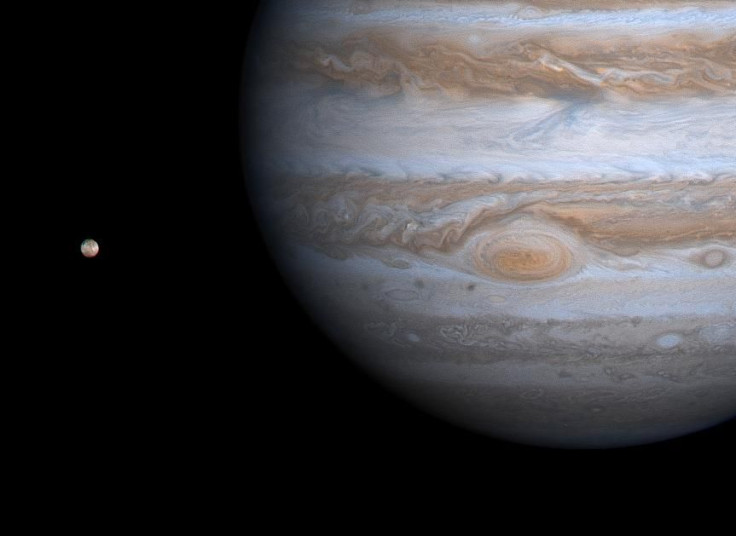Goodbye, Cassini: After Saturn, Is Jupiter Up-Next For Planet Exploration?

Cassini made its fateful plunge Sept.15 into the atmosphere of Saturn, ending its 13-year tour of the planet. The mission was a huge success for NASA, and vital information sent back from spacecraft formed the basis of many modern findings about the ringed planet.
A string of explorations and developments have marked the recent past at NASA, all aimed at unveiling the mysteries of the solar system. The Voyager mission just completed 40 years in space and the Peru Mars simulator is providing vital inputs on possible habitation on Mars.
Scientists at NASA have also turned their focus toward Jupiter, with Juno orbiting Jupiter since last summer. Two more Jupiter missions scheduled to launch in the next five years.
NASA's Europa Clipper spacecraft, will study the possibly habitable Jovian moon Europa and the European Space Agency's (ESA) Jupiter Icy Moons Explorer (JUICE) mission will study the giant planet and three of its four moons together.
These two missions mark the next step towards improving prescience regarding the four largest planets of our solar system, namely Saturn, Uranus, Neptune, and Jupiter.
Juno:
Juno is our best bet toward gaining important insight about Jupiter and Europa. The $1.1 billion mission was launched in 2016.
Juno’s orbital path around Jupiter brings it very close to the celestial behemoth's cloudy atmosphere. This approach gives it integral insight into understanding the conditions on the surface of the planet.
The data gathered by Juno will help us study the atmosphere and the gravitational and magnetic fields around the planet, providing us more information to study the evolution of the planet and in-turn the evolution of the solar system, say NASA mission scientists in a press release about Juno.
The JunoCam in place helps the spacecraft take high-resolution, breathtakingly beautiful images of Jupiter. The current schedule will see the spacecraft operating through July 2018, NASA officials said.
Europa Clipper:
NASA has already laid out the blueprint for the next Jupiter mission. The $2 billion Europa Clipper is slated to launch in 2022. It will enter the Jupiter’s orbit by 2025. The Clipper plans on orbiting Europa, Jupiter’s moon over 40 times over the next few years.
The Clipper will study Europa with a host of on-board instruments. The goal of the mission is to study the moon and the icy ocean beneath its surface. There have been rumors that the frozen water on the moon may be an indication of a possibility of life there.
A Congress directive in 2015 asked the team to add a lander on the spacecraft to enable the explorer to land on the moon. This would be an invaluable addition to the team and the data we can collect. A direct core sample would end all speculations almost immediately. The Clipper mission has the potential of being a solution to many questions plaguing astrophysicists for years.
JUICE:
JUICE is the ESA's first Jupiter effort. The lift-off scheduled for 2022 will reach the planet only by 2029. This is because the rocket powering the JUICE is nowhere close to NASA’s Europa. The whole mission will cost 1.5-billion euros ($1.8 billion) .
It will study Jupiter's atmosphere and magnetic environment, much like JUNO. It will also investigate Europa, Callisto and Ganymede; three of the planet's Galilean moons.
Widespread notions of giant oceans existing beneath the icy shells of these satellites have been on the mind of researchers for years. Ever since the Pioneer mission sent up-close images of the surface of these cosmic beings, researchers have wondered whether life can be sustained on these moons and how these frozen bodies of water came to be in the first place.
ESA hopes that the data from the Clipper and JUICE mission in unison will give very high resolution images of our celestial neighbors. NASA is a key partner on JUICE; the American space agency is providing one of the mission's 10 science instruments and sub-instruments for this mission.
NASA hopes that the insight can help us understand not only their inhabitability but also the way the planet and satellites interact with other celestial bodies.
The focus of NASA hasn’t completely shifted from Saturn to Jupiter. The discoveries made by Cassini have set the science world alight with curiosity. Data from Titan and Enceladus point to a very inhabitable terrain. This has left the whole science world screaming out for more data.
NASA wants to go back as early as 2025. Five of the 12 planned missions for the future have been earmarked for Saturn, Titan and Eceladus. NASA is expected to whittle this pool down to a few finalists and announce the selected mission in 2019. This selected mission is scheduled for 2025.
U.S. National Academy of Sciences has put out a list that ranks a Uranus or Neptune orbiter as the third-highest priority for a NASA "flagship" mission, behind only a potential Mars sample-return mission and the Europa Clipper. This makes it inevitable that the data available from far away sources will help provide concrete details regarding the mysterious pace around these celestial mammoths.
A 2040 Uranus and Neptune mission will be ideal as the two planets go into equinox in 2046 and 2050 respectively. This will facilitates better study as the spacecraft will be able to longitudinally study the planets and their satellites, much like what Cassini did with Saturn. Until then, let us bask in the glory of the excellent job NASA did with Saturn and Cassini.
© Copyright IBTimes 2025. All rights reserved.




















